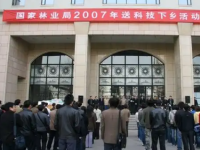Overseas institutions continue to increase their investment in China's bond market

In recent times, overseas institutions have continued to actively participate in the Chinese bond market. Data from the People's Bank of China (hereinafter referred to as the "Central Bank") shows that as of April 15, more than 1,160 overseas institutions have entered the Chinese bond market, and the total amount of bonds held by overseas institutions in my country was 4.5 trillion yuan, an increase of more than 270 billion yuan from the end of 2024. The total scale of my country's bond market has reached 183 trillion yuan, ranking second in the world.
"The enthusiasm of overseas institutions to participate in the Chinese bond market continues to heat up." Mingming, chief economicist of CITIC Securities, said in an interview with a reporter from Securities Daily that this is mainly driven by the following factors. On the one hand, China's macroeconomic operation is stable, RMB bond prices fluctuate small, stable returns, and has the value of diversified investment; on the other hand, against the background of fluctuations in the US dollar index and rising international geopolitical risks, the safe-haven attributes of China's bond market have gradually increased, and the weight of Chinese bonds in the three major international bond indexes (Bloomberg, JPMorgan Chase, and FTSE Russell) has steadily increased, attracting passive capital inflows to track the index.
"The steady economic fundamentals of China have enhanced the investment confidence of overseas institutions, stable RMB bond yields and high allocation value, and continue improvement of domestic policy environment have improved investment convenience. These factors have driven overseas institutions to continue to participate in the Chinese bond market." Yu Xiaoming, senior investment consultant at Shaanxi Jufeng Investment Information Co., Ltd., told reporters.
Mingming believes that my country's steadily expands the high-level opening up of the bond market and optimizes the entry process of overseas institutions, etc., are also one of the driving forces for overseas institutions to continue to increase their investment in China's bond market.
The reporter noticed that in recent years, the construction of the bond market system has been continuously advancing. For example, in January 2024, the People's Bank of China cooperated with the Hong Kong Monetary Authority to include RMB bonds under the "Bond Connect" into qualified collateral for RMB liquidity arrangements of Hong Kong Monetary Authority. In July of the same year, the central bank announced at the 7th anniversary forum of the "Bond Connect" that it supported overseas institutions to use "Bond Connect" bonds to pay the "Swap Connect" margin. In December of the same year, the central bank promoted the implementation of the interoperable counter banking business of the Sino-UK bond market.
In addition, the panda bond market has also shown a trend of continuous expansion in recent years. Overseas institutions are actively coming to China to issue panda bonds. As of April 15, the cumulative issuance volume exceeded 950 billion yuan. Last year alone, data showed that based on the bond interest rate date, my country's bond market issued 109 panda bonds, with a total issuance scale of 194.8 billion yuan, a record high. As of April 20, the scale of panda bond issuance this year has also reached 53.8 billion yuan.
Mingming analyzed that with the improvement of the cross-border payment and investment and financing functions of RMB, overseas institutions' demand for RMB asset allocation has increased. As a core financing tool denominated by RMB, Panda bonds have become an important channel for foreign companies to lock in low-cost funds. This year, the issuance of panda bonds has continued to grow. At the same time, in terms of issuance entities, it has also expanded from international financial institutions to multinational enterprises, with the proportion of pure foreign investment entities increasing; in terms of issuance period, the proportion of 5-year to 10-year bonds has increased to meet long-term financing needs.
Yu Xiaoming said that the issuance volume of panda bonds has continued to grow in recent years, and the issuance entities tend to diversify. In the future, the quality and expansion of the panda bond market can be made in the following aspects, including enriching bond varieties, improving market infrastructure such as issuance and trading, attracting medium- and long-term overseas funds (such as sovereign funds, etc.), and strengthening supervision to ensure market stability.
Mingming believes that in the future, the panda bond market can continue to encourage the issue of innovative varieties such as green bonds and social responsibility bonds, optimize pricing and trading mechanisms, and enhance market transparency. It can expand international cooperation and issuer diversity, and attract more countries and emerging industries to jointly build the "Belt and Road" and participating. At the same time, promote panda bonds to be listed in more offshore markets and enhance international liquidity. In addition, long-term funds such as pensions and sovereign wealth funds can also be attracted to enter the market, increasing the proportion of overseas debt holdings.










